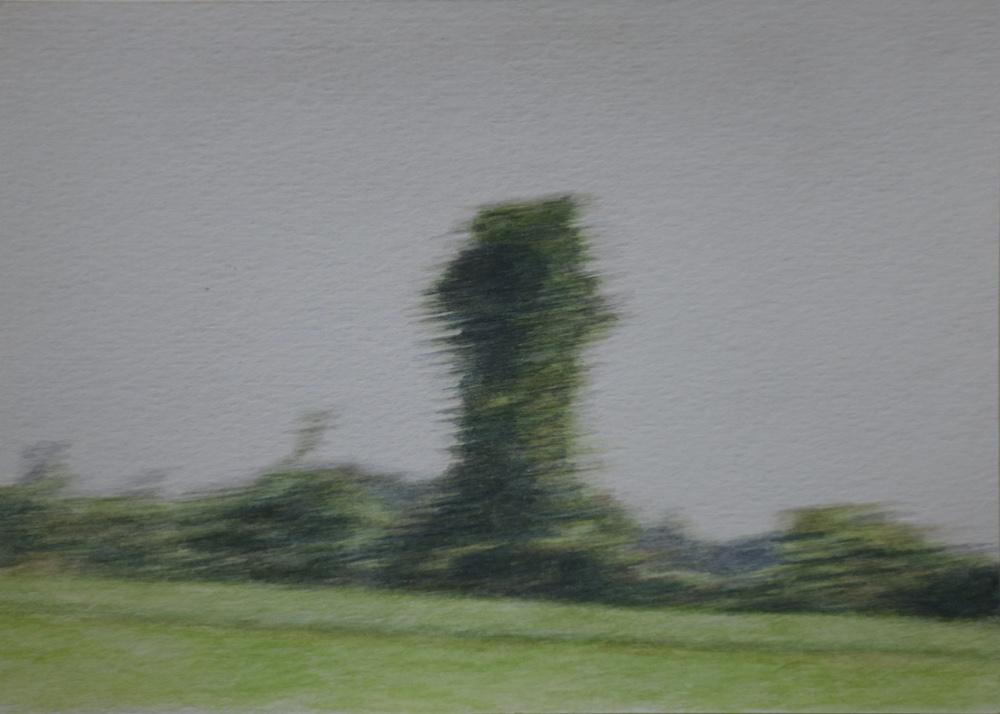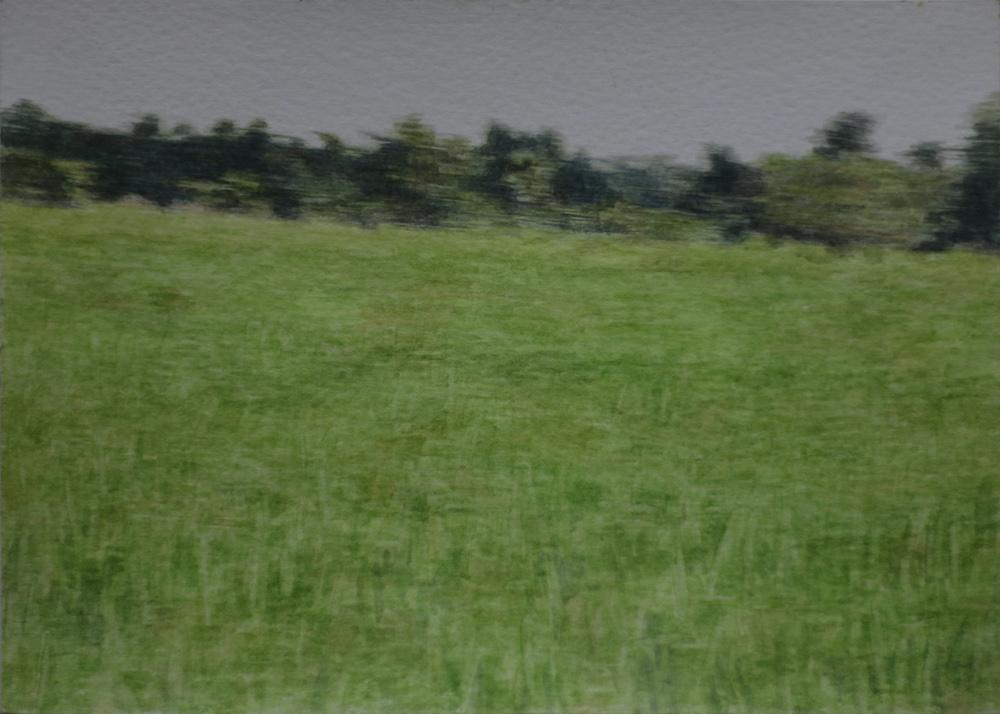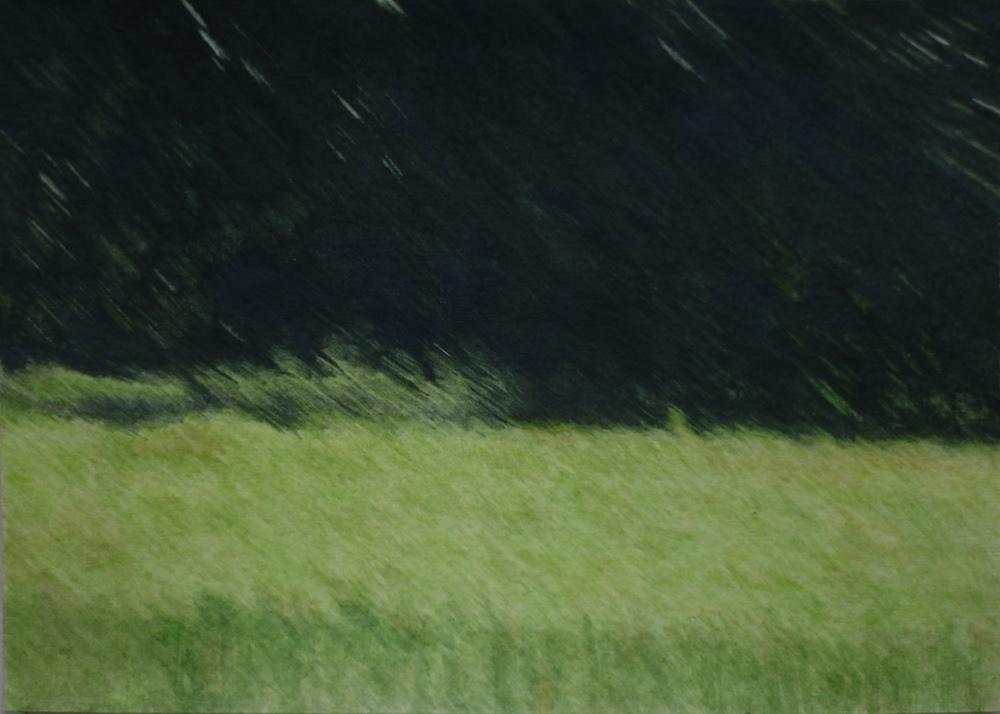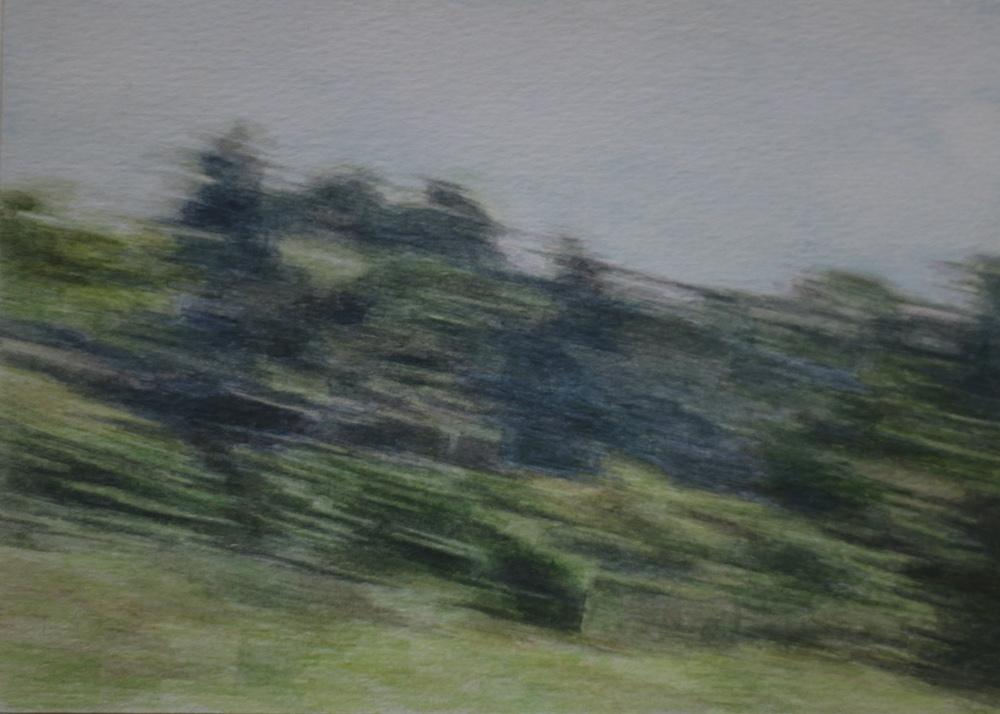Fabricating the Documentary Image: Shubham Kumar’s Negotiations with Violence and Representation
Shubham Kumar is an artist from Gaya, Bihar. His practice explores the dialogue between image making and histories of violence through material engagements with painting and photography. Ghare, Khet, Dera is a body of work that traverses the histories of serfdom, caste, economic precarity, homelessness and land politics through images of the artist’s family farmland. Having grown up under these circumstances, Kumar received many first-hand anecdotes of conflict between Maoists and landowning caste groups through the late 1990s and up until the early 2000s. His artist statement elaborates: “Land, for me, functions as a geography, a site for hierarchies, an understanding of class, economics, caste, nourishment and murder.”

Run. (Vadodara, 2019. Watercolour on Paper. 12.7 centimetres × 17.8 centimetres. Image courtesy of the artist.)
Two series of watercolour paintings titled Run and Escape Mechanism were painted referencing stills from videos recorded by the artist in and around his family’s farmland in Gaya. These stills reveal a blurred landscape of green fields and grass. The succession of obscured images perhaps stand out as flashes of memory from someone escaping a site of violence. While these videos were shot by the artist long after these incidents—which the artist never directly witnessed, but was in close proximity to through the accounts of those around him—he attempts to retrace, reinterpret and perhaps restage the moments of attack and escape that would have occurred in the fields during land riots.

Run. (Vadodara, 2019. Watercolour on Paper. 12.7 centimetres × 17.8 centimetres. Image courtesy of the artist.)
The act of painting adds another layer of fabrication to the images, which move away from an evidentiary narrative of the violent encounters to become fragments of a transitory moment. Thereby, Kumar’s photorealistic paintings of blurred images become a metaphor for the constant crisis of documentary narratives. Instead of representing the events of violence, they present an image from the land which is abstracted until it begins to break and the violence is manifested in the attempt to make meaning from these images.

Run. (Vadodara, 2019. Watercolour on Paper. 12.7 centimetres × 17.8 centimetres. Image courtesy of the artist.)
.jpg)
Escape Mechanism (Magic Wand). (Vadodara, 2019. Watercolour on Paper. 13.5 centimetres × 29.5 centimetres. Image courtesy of the artist.)
In the triptych Escape Mechanism, the artist adds a further layer of abstraction to the photographs from his farmland in the form of small, concealed icons of the computer cursor in one corner of the painting. As the paintings were made with the image as reference on the screen, the artist situates the cursor as a witness to these acts of fabrication of the documentary. As such this cursor is only visible on close attention, becoming symbolic of the larger technological apparatuses like the camera, digital editing software and media networks involved in the production of documentary narratives, which usually remain invisible in the telling of these violent histories.

Run. (Vadodara, 2019. Watercolour on Paper. 12.7 centimetres × 17.8 centimetres. Image courtesy of the artist.)
All images by Shubham Kumar.




